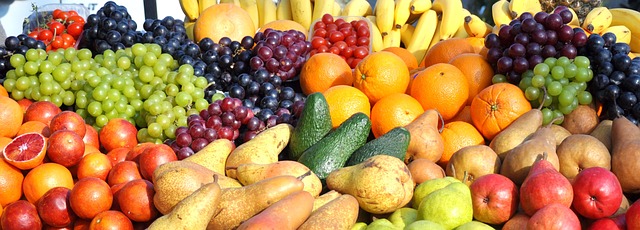
What Are The Best Food Sources For Vitamins?
You’ve heard all your life that vitamins and minerals are necessary for a healthy brain and body. Most of us have taken supplements and given them to our children as insurance that we’re getting enough of these essential nutrients. However, experts agree the best way to get nearly all of the necessary vitamins and minerals is by eating them. At Modern Kids Design, we’ve compiled a sampling of some of the most nutrient-rich foods—something for every palate from peanut butter to Alaskan King crab—to help you keep your family healthy, naturally. 🙂
Vitamins in Real Food
Vitamin A: Sweet potatoes, yams, squash, carrots, beef liver, spinach, fish, milk, eggs, carrots, shrimp, fortified cereals, pumpkin, kale, cantaloupe, apricots, peaches, papayas, and mangos
Vitamin B1: (see THIAMIN)
Vitamin B2: (see RIBOFLAVIN)
Vitamin B3 (see NIACIN)
Vitamin B5 (see PANTOTHENIC ACID)
Vitamin B6: Eggs, spinach, chickpeas (garbanzo beans), seeds, red meat, fish, beef liver, potatoes, bananas, poultry, and fortified cereals
Vitamin B12: Clams, beef liver, red meat, poultry, trout, salmon, tuna, milk, cheese, eggs, and fortified cereals
Vitamin C: Orange juice, sweet red peppers, kiwi fruit, broccoli, brussels sprouts, cantaloupe, oranges, limes, lemons, strawberries, guava, peppers, tomatoes, and spinach
Biotin: Whole grains, organ meats, egg yolks, soybeans, and fish
Calcium: Dairy products, tofu, kale, Chinese cabbage, fortified fruit juices, and cereals
Choline: Milk, eggs, liver, and peanuts
Vitamin D: Swordfish, salmon, tuna, sardines, mackerel, cod liver oil, egg yolks, and fortified milk, breakfast cereals, yogurt, soy milk, and orange juice
Vitamin E: Wheat germ oil, sunflower seeds, almonds, vegetable oils, green leafy vegetables, avocados, and whole grains
Folate: Asparagus, orange juice, beef liver, spinach, dark leafy green vegetables, legumes, fruit, nuts, dairy products, and fortified cereals
Iron: Red meat, fish, turkey, chicken, chicken liver pork (heme iron) and lentils, prunes, spinach, and beans (nonheme iron)
Vitamin K: Cabbage, liver, eggs, milk, kale, broccoli, Brussels sprouts, spinach, and greens (collard, turnip, mustard, and beet)
Lycopene: Asparagus, tomatoes (cooked and raw), parsley, and watermelon
Lysine: Red meat, nuts, legumes, and soybeans
Magnesium: Wheat bran, almonds, cashews, and spinach
Niacin: Peanuts, peanut butter, red meat, potatoes, beef and chicken liver, fish, dried yeast, mushrooms, and fortified cereals
Omega-3 fatty acids: Vegetable oil, green vegetables, nuts, seeds (ALA), and fish (EPA and DHA)
Pantothenic acid: Whole grains, broccoli, mushrooms, chicken, avocados, and tomato products
Potassium: Sweet potato, tomato paste, beet greens, potatoes, red meat, chicken, and fish
Riboflavin: Green leafy vegetables, asparagus, broccoli, meat, beef liver, eggs, peas, lentils, dairy, meat, eggs, nuts, and fortified cereals
Selenium: Brazil nuts, and canned tuna
Thiamin: Lean meats, pork, ham, beans, pine nuts, watermelon, squash, wheat germ, dried yeast, soy milk, soybeans, peas, and fortified breads, cereals, and pasta
Zinc: Oysters, red meat, poultry, and crab
How do you get your family the vitamins they need to be strong and healthy? We enjoy hearing from you at healthyliving@modernkidsdesign.com. As always, thanks for reading!

